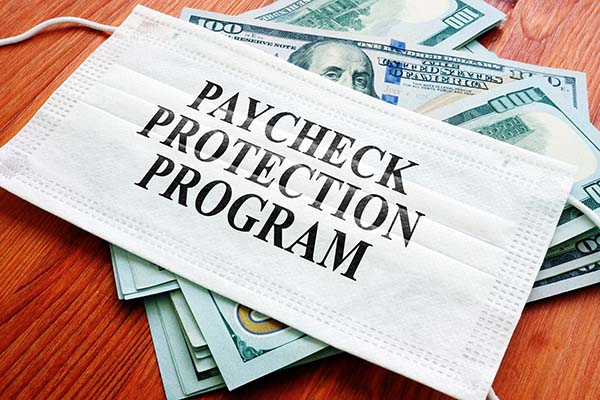
You May Be Eligible for the Paycheck Protection Program (Even if You Tried and Were Denied Before)
Congress has begun intense negotiations this week on what it believes will be a final economic relief program prior to the November election. Unlike earlier relief efforts that quickly spawned broad agreement, the negotiating parties begin far apart this time in their desires. Whether a package can be agreed upon by early August and what elements may be included remain uncertain.
What is certain is that over $100 billion of untapped Paycheck Protection Program (PPP) funds remain available to qualified borrowers who apply by August 8. Even if you practice by yourself and have no other employees, you likely are eligible: you will be considered both the owner and the employee. Literally hundreds of thousands of US businesspersons have successfully secured PPP funds, in most cases qualifying for dollar amounts ranging from $10,000 to $100,000.
The amount you can qualify for is equal to 2½ months’ worth of payroll (or earnings from your services if you are self-employed) plus office rent, insurance, and utility expense. The funds are provided in the form of a loan at 1% interest, but so long as you generate payroll, rent, and/or utilities expense at least equal to the loan amount over the 24 weeks after receiving loan proceeds, the federal government will forgive the loan, making it in essence a gift to you. You have 10 months after the end of the loan period to apply for loan forgiveness. To be eligible for full loan forgiveness, at least 60% of your expenses have to be for payroll or your self-generated receipts for services provided to clients.
The one constraint: If you are receiving unemployment insurance payments, either conventional or self-employed worker versions, you are not eligible to pursue a PPP grant.
The US Treasury and the Small Business Administration provide extensive information on the PPP program. We have tried here to summarize the most important points.
Here’s how the program works. You do not apply directly to the government. Rather, you apply through an SBA-approved commercial lender. The US Treasury website includes a “Search Tool: Find an Eligible Lender” link in the “For Borrowers” section. Simply punch in your zip code and see which bank or banks show up.
Some readers may have tried months ago to seek bank help in securing a PPP loan, only to be rebuffed. It is true that many lending institutions in April favored their existing customers. It is worth trying again, now that the program has settled in. You may receive a better reception. That is certainly likely to be the case if you are approaching a bank where you already have an established relationship. Even if you lack such a history, try an eligible bank.
Rather than getting bogged down reading all the regulations, our advice is to:
- Gather your 2019 tax and banking records covering payroll or payments you received for services provided, rent, utility payments, and/or mortgage interest, then pull together the same income and expense information for January–June 2020.
- Then, get an appointment with a qualified bank to discuss obtaining a PPP loan from the SBA, and bring those records with you. Allow the bank to steer you through the application process and provide a more detailed explanation of the program rules.
If no local bank is interested, Intuit also is now an approved PPP lender. Some members have found it easier to obtain a loan from similar institutions than from a large bank.
Whatever route you pursue, DO NOT DELAY. It will take several days to get an application correctly completed and submitted to the SBA.
For more COVID-19-related information and guidance, visit our dedicated resource page.